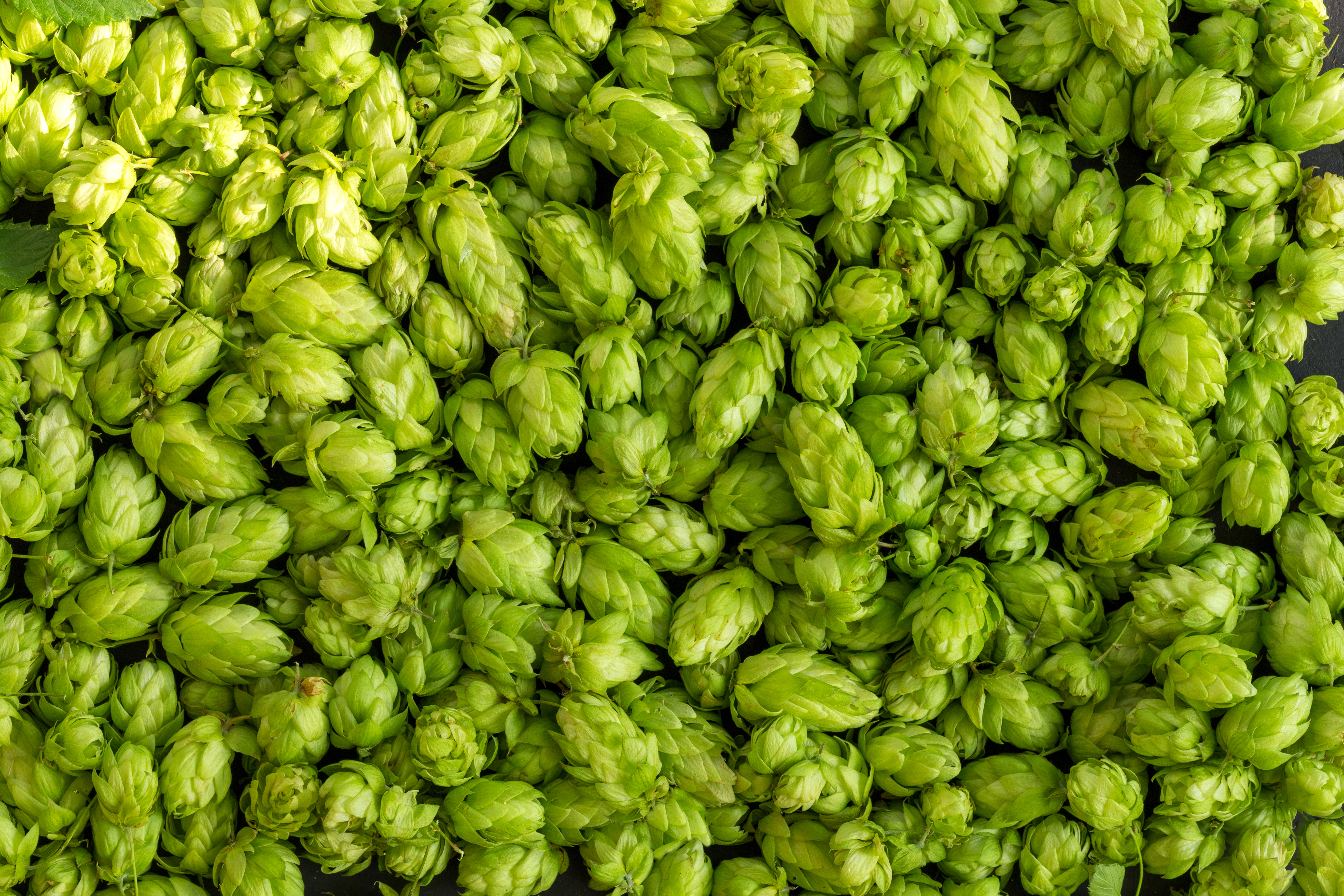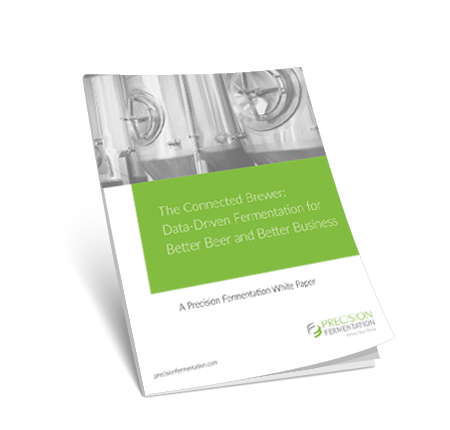
Why some brewers are dry hopping during active fermentation

By refusing to wait until fermentation has finished to dry-hop their beers, brewers are extracting surprisingly different aromas, flavors and appearances
In addition to “hazy” and “tropical,” “dry-hopped” may be the word-du-jour ricocheting around the IPA landscape. Most dry hopping — which must happen post-boil for the hops oils to retain their delicate volatile compounds — occurs during secondary fermentation, though it’s not altogether uncommon for brewers to drop hops into the primary fermenter after the yeast has completed its work.
However, in what’s gaining ground as an alternative dry-hopping technique, some brewers are adding hops during the active phase of primary fermentation, specifically as the liquid drops from half- to-terminal gravity. This results in an altogether different beer, not just in aroma but appearance and flavor as well.
Differences in Results from Dry-Hopping During Fermentation
In 2016, Manchester, England’s Cloudwater Brew brewed up an experiment: two exact-same double IPAs, save one dry-hopped during primary and the other afterwards. The differences presented clearly.
Draft Magazine Beer Editor Zach Fowle reviewed, “It’s as stark a visual contrast as you’d get putting a bright West Coast-style IPA up against a turbid Northeast variety,” and called v4 (dry-hopped during fermentation), “catty, funky and herbal, but with nice tropical notes,” and v5 (dry-hopped after), “lemonade-citrusy and full of additional orange peel, orange blossom, honey and lime notes.”
How Yeast Impacts Dry-Hopping
Research into yeast action on hops has ramped up in recent years and scientists are finding that certain strains of Saccharomyces cerevisiae can alter and/or liberate some flavor compounds in hops oils, causing the disparity between the Cloudwater beers. Put simply, these yeast strains don’t limit themselves to just metabolizing sugars. They can also act on other compounds, including those found in hops oils.
In a natural process called biotransformation one organic compound can chemically change into another. In dry hopping, fermentation can alter some oil compounds, like terpenes, into more volatile and flavor-active ones. Brewers commonly cite the transformation of geraniol to ß-citronellol as an example.
Another pathway involves an enzymatic reaction in which the active yeast hydrolyzes (breaks down) glycoside, a non-aromatic type of sugar molecule, into two components: digestible sugars and terpenoids, a highly aromatic class of organic chemicals.
Firestone Walker Brewing Brewmaster Matt Brynildson, who prefers to dry hop during fermentation, explains, “In simple terms, some of the flavor-active compounds in hops are tied to plant-derived sugars. Yeast can’t necessarily consume these sugars but they produce enzymes that work to break chemical bonds, which can liberate the sugar (what the yeast is interested in). At the same time the associated flavor-active compound is liberated into the beer and ultimately enhances its aromatic quality.”
Advantages and Disadvantages
Because yeast consumes the available oxygen during fermentation, dry hopping this way allows a brewer to avoid oxidizing the beer when she introduces the hops into solution. That said, the procedure can prove far more difficult than dry-hopping after the beer reaches its terminal gravity, no thanks to two realities of carbon dioxide. The first: the CO2 created by fermentation can strip away those desired volatile compounds. The second: the dreaded geyser (AKA “beer volcano”) – a wet, gassy eruption that can occur when too many CO2 bubbles cluster into nucleation sites in the hop particles and burst out of the tank.
Whole hops don’t behave as temperamentally as pellets, though it’s smart to leave some room at the top of the tank and add the hops slowly, whichever type is used. Instead of dosing their actively fermenting beers directly with hops, brewers at places like New Belgium, Troegs and AleSmith attempt to manage these challenges by mixing up a hop slurry, which they concoct by combining the hops and a small amount of beer, that they shoot into the full batch.
Precautions
One final caution: recent research has found dry hopping to raise the liquid’s pH in a fairly linear path that follows the quantity of hops used. The higher the pH, the higher the perception of bitterness, and vice versa.
Learn About BrewMonitor®
For a comprehensive, real-time solution to help streamline fermentation management, try BrewMonitor from Precision Fermentation. BrewMonitor enables craft brewers to live-stream DO, pH, gravity, pressure, internal/external temperature and conductivity data to any smart phone, tablet or PC. It also sends instant alerts if a fermentation’s metrics go out of range. BrewMonitor helps increase efficiency and save money, while dramatically improving batch-to-batch consistency.
Get Started with BrewMonitor – Zero Risk
 Free White Paper: “The Connected Brewer”
Free White Paper: “The Connected Brewer”
Download the free Precision Fermentation white paper, “The Connected Brewer: Data-Driven Fermentation for Better Beer and Better Business.” Can fermentation management be improved, as a process? In this white paper, Precision Fermentation explores how manual fermentation management impedes creative and efficient brewing, as well as the potential benefits of leveraging real-time fermentation data. Download here »
About the Author
Tara Nurin is the beer and spirits contributor to Forbes, the drinks columnist for New Jersey Monthly, a co-host of the weekly What’s on Tap TV show, and a writer for publications like Food & Wine and Wine Enthusiast. The certified beer judge teaches a for-credit university beer class and leads beer seminars for institutions like the Smithsonian. The former broadcast news reporter has won two first place awards from the North American Guild of Beer Writers, founded NJ’s original beer education group for women and volunteers as the archivist for the Pink Boots Society for women in the beer industry. She’s currently writing a book about the history of women in beer for publication in spring 2021.



